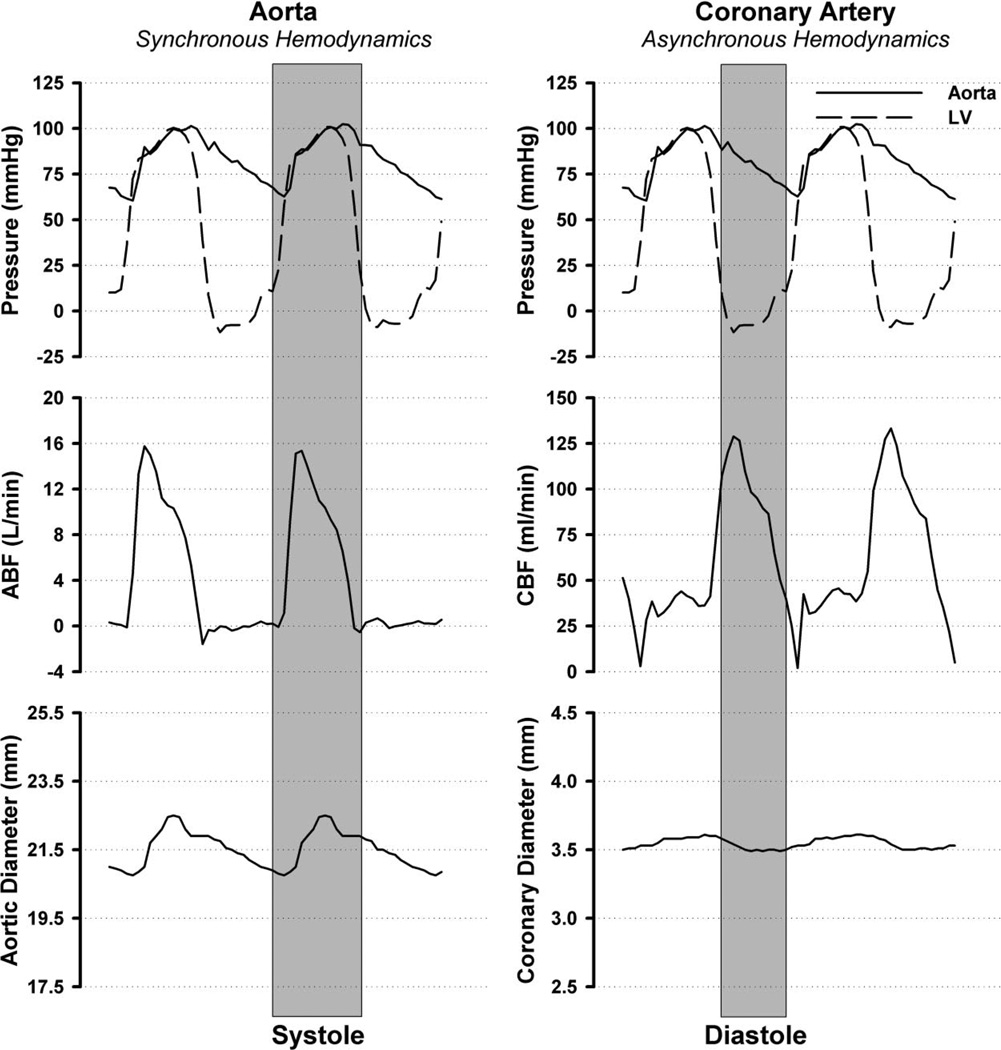Fig. 5.
Synchronous and asynchronous hemodynamic environments as observed in a chronically instrumented pig during moderate treadmill exercise. On the left, synchronous hemodynamics as defined by Dancu et al. (18) are illustrated with measures of aortic pressure, left ventricular (LV) pressure, aortic blood flow (ABF), and aortic diameter. In contrast to this nearly synchronous hemodynamics, asynchronous hemodynamics are illustrated on the right with measures of aortic pressure, LV pressure, coronary blood flow (CBF), and coronary artery diameter. Systole and diastole were defined by the LV pressure trace obtained from a high-fidelity Konigsberg pressure transducer. Aortic and coronary flows were determined with Transonic flow probes, and aortic pressure was measured through a fluid-filled catheter.

